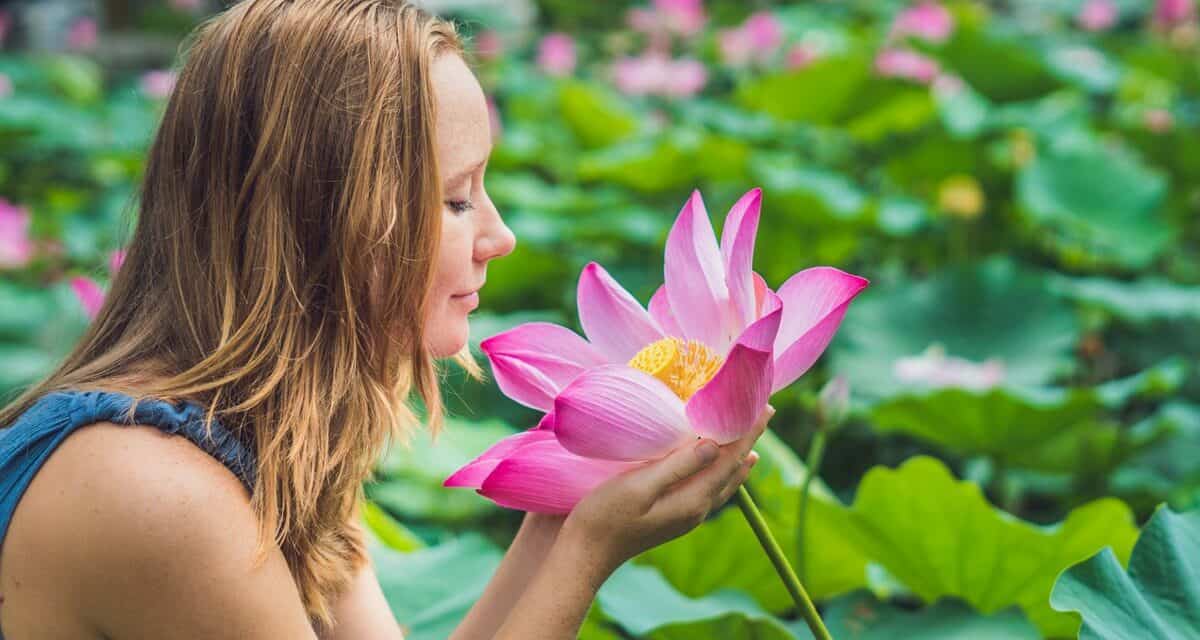Throughout various cultures and epochs, the lotus flower has been revered not only for its striking appearance but also for its enchanting fragrance. Known scientifically as *Nelumbo nucifera*, the lotus has captured the imagination of poets, artists, and botanists alike. The question that arises, however, is whether these floral wonders indeed smell as sublime as one might expect. In this exploration of its aromatic qualities, we will delve into the intricacies of the lotus’s scent, its chemical composition, cultural significance, and its perceived implications for wellbeing.
The Aroma of the Lotus Flower
The image of the lotus often evokes tranquil scenes of serene waters and gentle breezes. Yet, when it comes to its olfactory profile, one must first take into account the variety of lotus species. The most commonly recognized lotus, *Nelumbo nucifera*, is distinguished for its regal blossoms that can vary in color from pristine white to deep pink. Each petal unfurls not only to offer visual delight but also to emanate a faint and often elusive fragrance.
While many enthusiasts report a delicate floral scent reminiscent of sweet, milky undertones, the fragrance is typically subtle and understated. It is crucial to note that unlike more pungent flowers such as roses or jasmine, lotus does not have an overpowering aroma. Instead, its odor tends to be soft, evoking imagery of peaceful landscapes rather than vibrant, bustling gardens.
Chemical Composition of Lotus Fragrance
The enchanting scent of the lotus can be attributed to its unique chemical constituents. Compounds such as **linalool**, **geraniol**, and **nerol** contribute to the flower’s gentle fragrance. These compounds are common in various plant species, providing sweet, floral notes. However, the concentration and combination found in the lotus render its scent distinctive.
Linalool, for instance, is known for its calming properties. This compound is often used in aromatherapy, promoting relaxation and tranquility. Geraniol, with its rosy aroma, is a primary component found in numerous essential oils. The synergy among these compounds is what creates the characteristic scent of the lotus flower—an ethereal quality that can transport one to landscapes of purity and peace.
Environmental Factors Influencing Scent
The fragrance of the lotus flower is not static; it can vary significantly based on environmental conditions. Factors such as temperature, humidity, and soil composition play a vital role in scent potency. For instance, a lotus flower blooming in a tropical climate may exhibit a more pronounced aroma compared to one grown in cooler regions. Water quality and the presence of nutrients also influence the plant’s ability to produce aromatic compounds.
Moreover, the time of day can affect the scent profile. Lotus flowers are known to bloom in the morning and close in the afternoon, and their fragrance is usually more prominent during these early hours. This daily rhythm aligns with pollination patterns, as many pollinators are active at dawn, drawn by the alluring scent.
Cultural Significance and Symbolism
Beyond its aesthetic appeal, the lotus flower holds profound cultural significance across various civilizations. In Hinduism, the lotus symbolizes purity and spiritual awakening, while in Buddhism, it represents enlightenment, emerging from murky waters to bloom majestically. The fragrance of the lotus is often likened to divine presence, reinforcing its spiritual associations.
Additionally, the lotus is frequently used in traditional medicine practices. Many cultures utilize its extracts for various therapeutic purposes, believing that its scent can impart calmness and tranquility. The experience of inhaling the delicate aroma is thought to foster mindfulness, thus enhancing one’s spiritual journey.
Lotus in Modern Aromatherapy
With the growing popularity of holistic practices, the lotus flower has found its way into modern aromatherapy. Essential oils derived from lotus are touted for their relaxing qualities. During massages or meditation, the gentle scent is utilized to enhance emotional wellbeing and promote emotional balance. Many practitioners believe that inhaling the fragrance of lotus can help alleviate stress and anxiety, bringing forth a sense of peace much sought after in today’s fast-paced world.
The use of lotus in perfumery has also gained traction. While not as widely commercialized as other floral scents, lotus-infused fragrances offer a distinctive alternative for those seeking uniqueness in their aromatics. These blends often include other complementary floral notes, thus enhancing the overall profile and creating a harmonious bouquet.
A Concluding Reflection
As we dissect the fragrance of the lotus flower, it becomes evident that labeling it as simply “heavenly” overlooks the complexities tied to its aromatic essence. Its faintly floral aroma encapsulates the subtleties of nature, reflecting a quiet beauty that belies its intricate composition. Whether cherished for its spiritual symbolism, utilized in therapeutic practices, or simply admired for its delicate scent, the lotus flower serves as a reminder that sometimes, it is the understated qualities that hold the most profound allure. In a world that often craves the loud and the vibrant, the gentle whisper of the lotus fragrance resonates in a uniquely peaceful manner, inviting reflection, serenity, and a deeper connection to the natural world.

